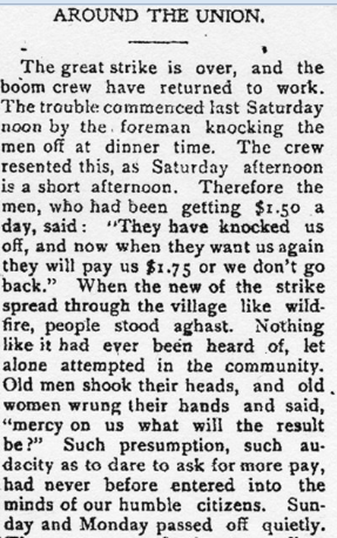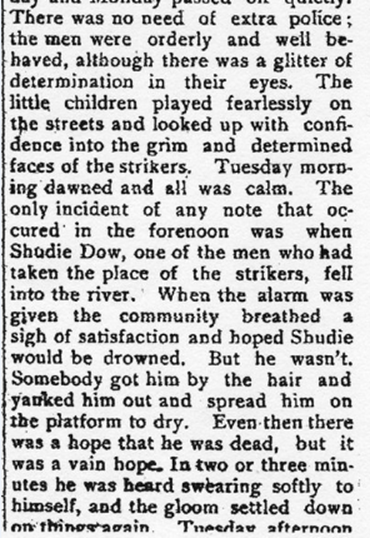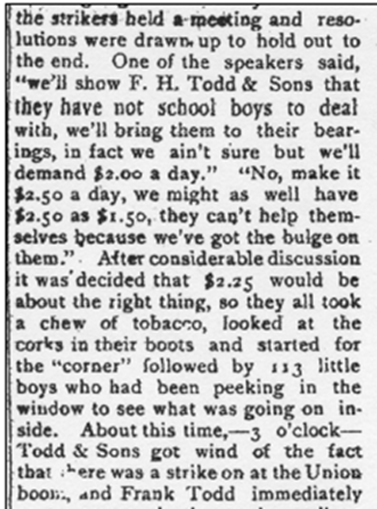1903 was a relatively peaceful year. There were no major military conflicts and only a few political dust-ups, primarily those involving the European powers colonial land grabs, especially in Africa. Joseph Conrad, in his classic Heart of Darkness put it best:
“They grabbed what they could get for the sake of what was to be got. It was just robbery with violence, aggravated murder on a great scale, and men going at it blind—as is very proper for those who tackle a darkness. The conquest of the earth, which mostly means the taking it away from those who have a different complexion or slightly flatter noses than ourselves, is not a pretty thing when you look into it too much.”
Conrad was referring to the Belgian Congo, then under the boot of King Leopold of Belgium, and in 1903 the Brits made the cruelty displayed by Leopold in the Congo a cause célèbre. The moral outrage of the English was viewed with some skepticism by the rest of the world given that 1903 was the year King Edward crowned himself the “Emperor of India” over the often violent objections of most Indians. In a gesture of great magnanimity the new Emperor released 16,000 Indians then in prison for being insufficiently grateful for benefits of British rule but many soon reoffended and were again behind bars. In this hemisphere the United States was having considerable difficulty convincing the government of Columbia, of which Panama was then a part, to sign a treaty granting the U.S. rights to the Canal Zone. An insurrection was orchestrated by which the zone declared itself a free republic and US warships prevented the Columbians from retaking the Canal Zone by force. The new government was immediately recognized by the United States and a treaty, very favorable to the US, was quickly negotiated.
In the United States, President Teddy Roosevelt turned his “Trustbusters” loose, thus beginning his campaign against big business and he showed his somewhat limited support for civil rights by closing a post office in Mississippi because the town refused to accept a black postmistress. Niagara Falls stopped running because of a drought and the first automobile trip across the United State was completed. Ford Motors incorporated, and in May of 1903 both Bob Hope and Bing Crosby were born. The most far-reaching event of the year, however, involved the Wright brothers who got airborne at Kitty Hawk. In sports the National and American Leagues made peace and the first World Series was played and won by the Boston Pilgrims. The Yankees, then the Highlanders, played their first game; and the reigning batting champion, Ed Delahanty, jumped his team and disappeared after being removed from a train near Niagara Falls for intoxication. His body was found a week later below the falls, it being assumed he fell in the water while trying to cross the railroad bridge. James J. Jeffries KO’d James J. Corbett; and the Phillies walked 17 Dodgers in one game.
In the Valley the big news of the year was the devastating fire at Ganong’s candy factory on Water Street in St. Stephen—one of the largest employers in the area. George Boardman’s highly regarded book A Naturalist on the St. Croix was published and, on September 13, 1903, the first motion picture was shown at the Opera House in Calais.
A five-man German band on its way to Boston was detained by overzealous Immigration inspectors in Calais causing a bit of an international incident. The inspectors threw the incredulous Germans in the local pokey and only released them several days later when the Chief Justice of the Maine Court, finding the inspector had no legal cause for the arrest, ordered their release. After being released the Germans went to a local hotel to await the train and were rearrested by the irate Immigration inspector. At this point the Feds stepped in and took the Germans to Boston where it is understood they were again released to the delight of the Boston’s German community. The Advertiser noted that the Immigration officers had been doing “some very high-handed things” lately. In Eastport Sheriff Tarbox shut down all the gin mills again, and an article appeared in the Advertiser claiming Buffalo Bill Cody was actually a native of Columbia Falls “born in an old frame house in the Town of Columbia on what is known as Foran Hill…” Elaborate detail is provided as to genealogy all of which, by the way, turns out to be untrue. The Indian Agent, Charles Rolfe, reported that the Passamaquoddy tribal census for the year was 464, with 12 births and 16 deaths for the year ending December 1, 1903.
This photo shows the Ganong factory burning:
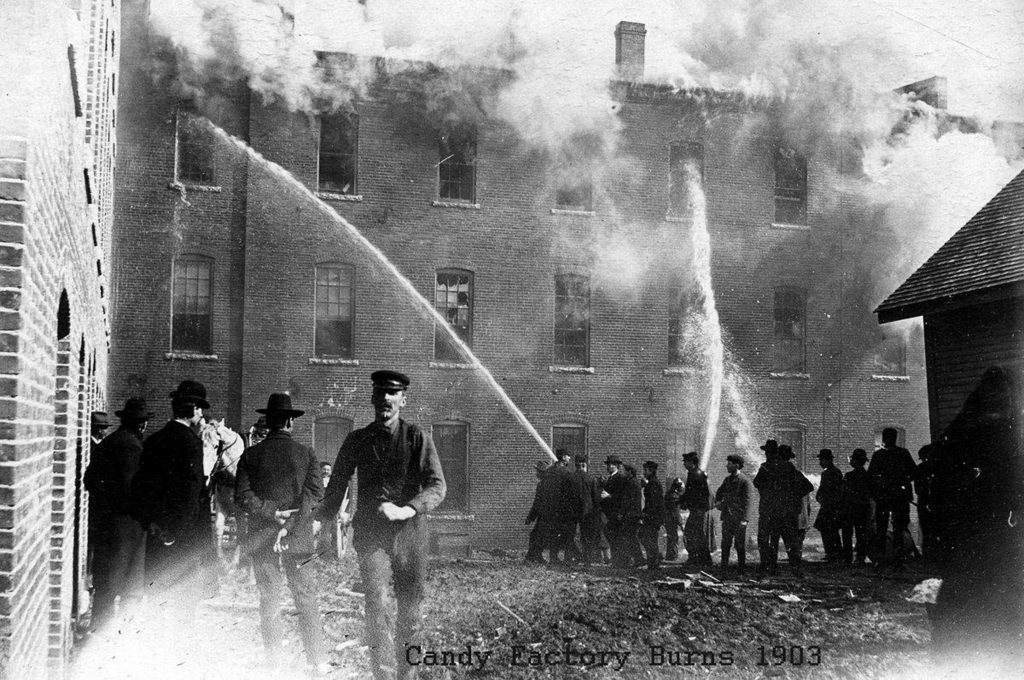
The following two photos show the crowds watching the firemen fight the blaze. The Water Street location of Ganong’s has not changed. Much of this building remains today.
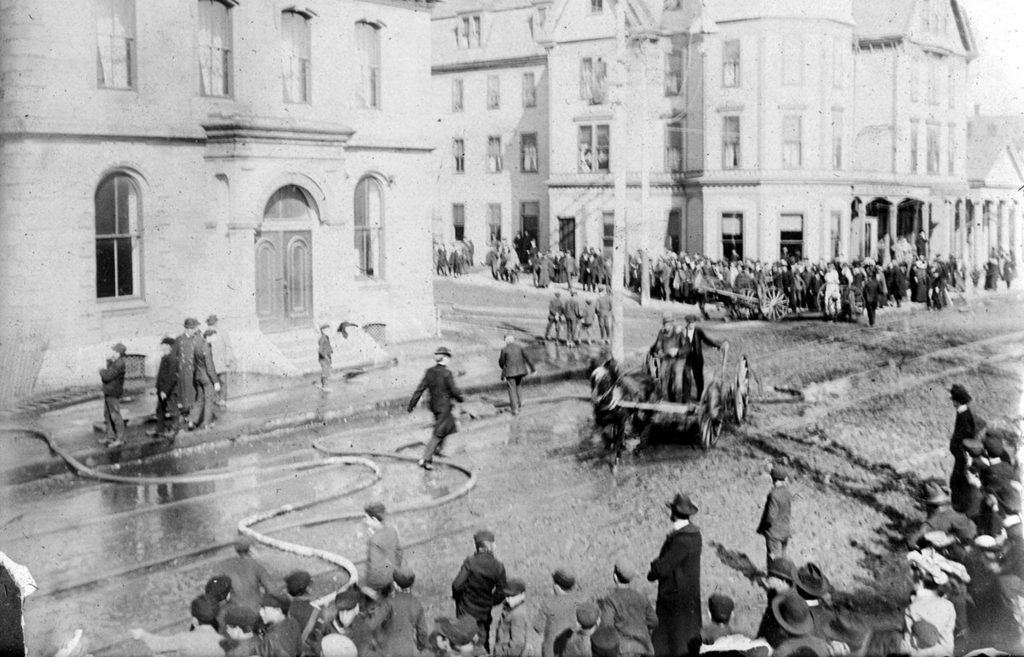
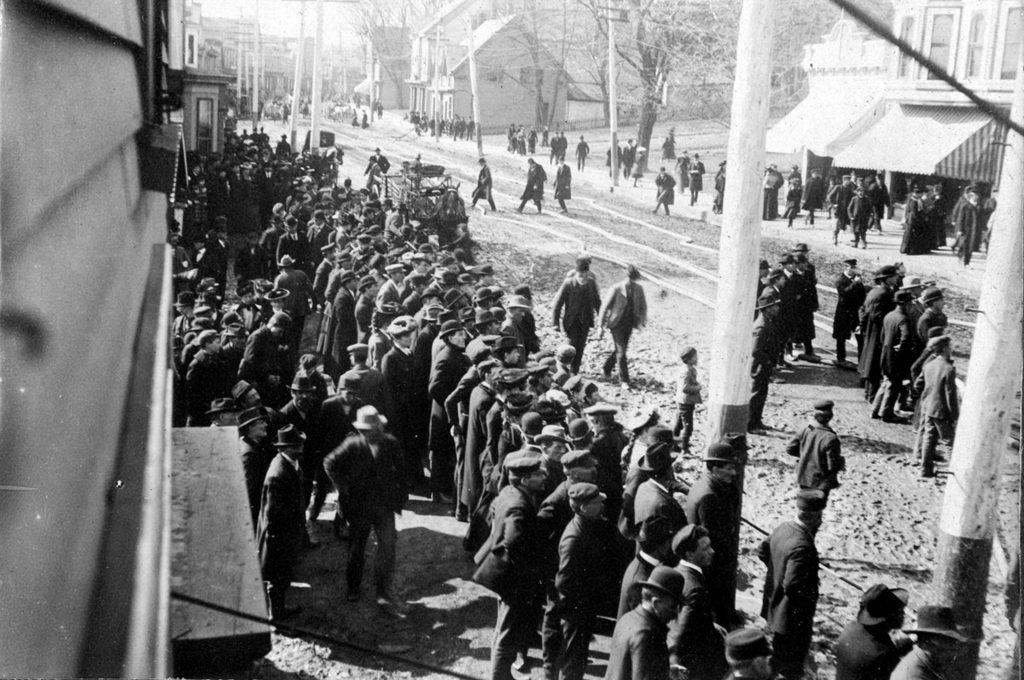
The 1903 Calais football team is seen below. Football was a very popular sport in Calais from the late 1800s until the late 1920s. There were not only school teams, but each town, Calais, St. Stephen, and both Milltowns, had town teams.

Calais’s first auto was electric; the gas-powered car, or motor, as they were called then, did not arrive until 1904.
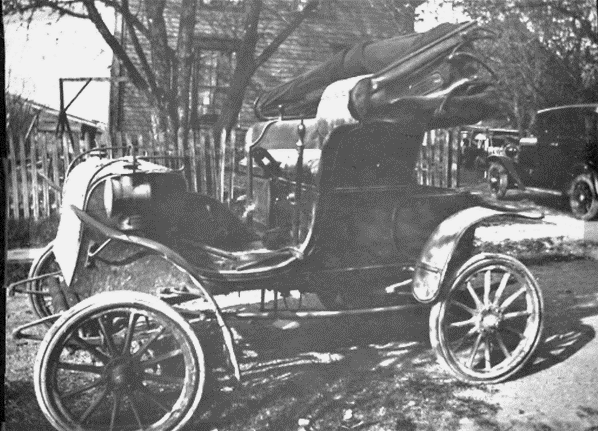
The first automobile to make its appearance in Calais was the 1903 Stevens-Duryea seen below, with a top speed of 10 miles per hour. This car featured hard rubber tires and buggy springs, and you steered it with a lever instead of a wheel. The engine was in the back, and it was run by batteries that had to be recharged at short intervals. The writer remembers this car very well running through the streets of Calais, and if memory serves me correctly, I believe it was owned by Mr. Curran, manager of the Calais Street Railway Company (electric cars).

The first automobile in Calais run by gasoline was owned by Dr. Charles Samuel Murphy, a dentist (b. 1872 in Canada), in 1904, and the second by T.W. McAllister in 1904. The third was owned by Charles Phinney—also in 1904.
The first motorboat, named “Gloria” and the second, named “Guy and Doris,” were both owned by Allie McAllister in 1899.
For most of Calais’s history, recreation involved the river, especially swimming in it; and kids especially were not inclined to trudge home for a bathing suit if struck by a sudden urge to cool off.
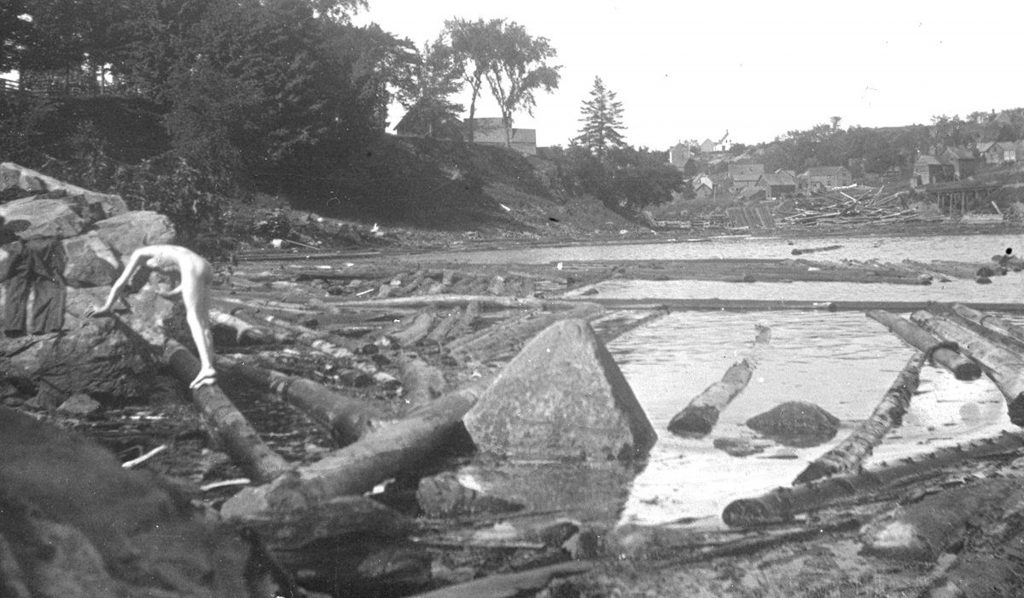
This is the railway underpass which goes under Main Street to this day near the corner of Union Street. The building to the far left, just the wall visible, was Alexander’s Wallpaper Store. The buildings in the background are gone now. When the streetcar was introduced, it was necessary to run the Main Street tracks over the underpass; but the structure was not sufficiently reinforced to handle the weight of the streetcar, resulting in collapses such as this.
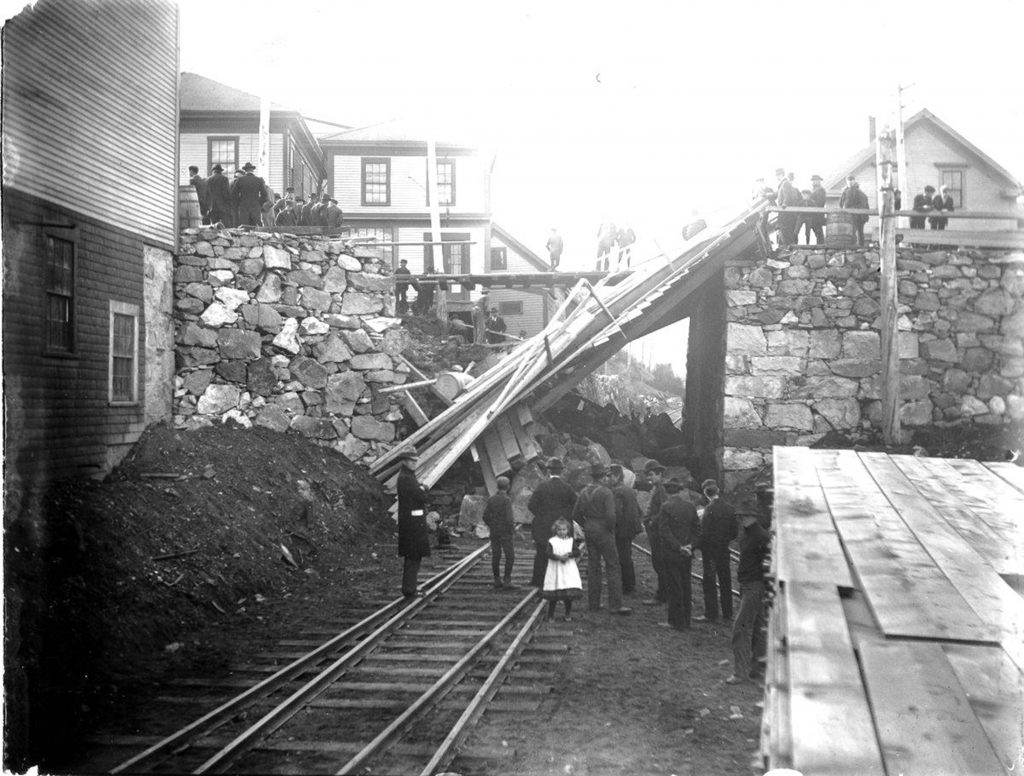

The next shows a 1903 article on an unsuccessful strike on the docks of Calais. The workingman had no power in 1903 and was at the mercy of the mill and dock owners. It was, to some degree, people like the Calais Eatons and Murchies, who were targeted by Teddy Roosevelt when he attacked the trusts in 1903.
